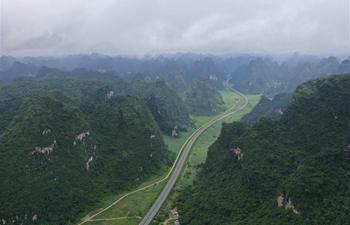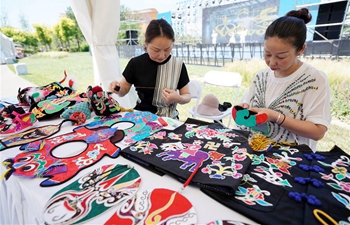BEIJING, July 6 (Xinhua) -- The following are the highlights of China's science news from the past week:
HIGHEST ENERGY COSMIC GAMMA RAYS
A joint research team made up of Chinese and Japanese scientists has discovered the highest energy cosmic gamma rays ever observed from an observatory in Tibet, opening a new window to explore the extreme universe.
The energy of the gamma rays is as high as 450 TeV, equivalent to 45 billion times of the energy of X-rays for medical diagnosis, according to researchers from the Institute of High Energy Physics of the Chinese Academy of Sciences.
Scientists believe that those energetic gamma rays were from the Crab Nebula, a famous supernova remnant in the constellation Taurus, about 6,500 light years away from Earth.
SCIENCE INFRASTRUCTURE PROJECTS
China's two major science infrastructure projects, a new radiation light source device and an advanced biomedical imaging facility, have just been launched in Beijing, aimed at strengthening the country's fundamental research. They will be put into service in 2025 and 2023 respectively.
YAKS WITHOUT HORNS
A new yak breed, which has no horns, has been cultivated by a research team from the Lanzhou Institute of Husbandry and Pharmaceutical Sciences of the Chinese Academy of Agricultural Sciences.
It is expected to help herdsmen on the Qinghai-Tibet Plateau, known as the "roof of the world," out of poverty.
RADIO TELESCOPE
China's Five-hundred-meter Aperture Spherical Radio Telescope (FAST), the world's largest single-dish radio telescope, has discovered 84 new pulsars since its trial operation began in September 2016, according to Jiang Peng, FAST chief engineer.
VEGETATION CHANGES
A new study has revealed vegetation changes in south China over the past 20,000 years, which can help scientists better understand the impact of climate change and human activities on vegetation.
The study, led by researchers from Nanjing Institute of Geology and Palaeontology under the Chinese Academy of Sciences, found that climate has gradually warmed up in south China since the "Last Glacial Maximum," 20,000 years ago.
GENE-EDITING FOR SOYBEAN
Chinese scientists have used gene-editing technology to create soybean mutants that can adapt to low altitude areas, paving the way for the breeding of new soybean varieties.
Scientists from the Chinese Academy of Agricultural Sciences used the CRISPR/Cas9 gene-editing tool to knock out two key genes that regulate soybean flowering, and adopted hybridization technology to create the mutants.
















